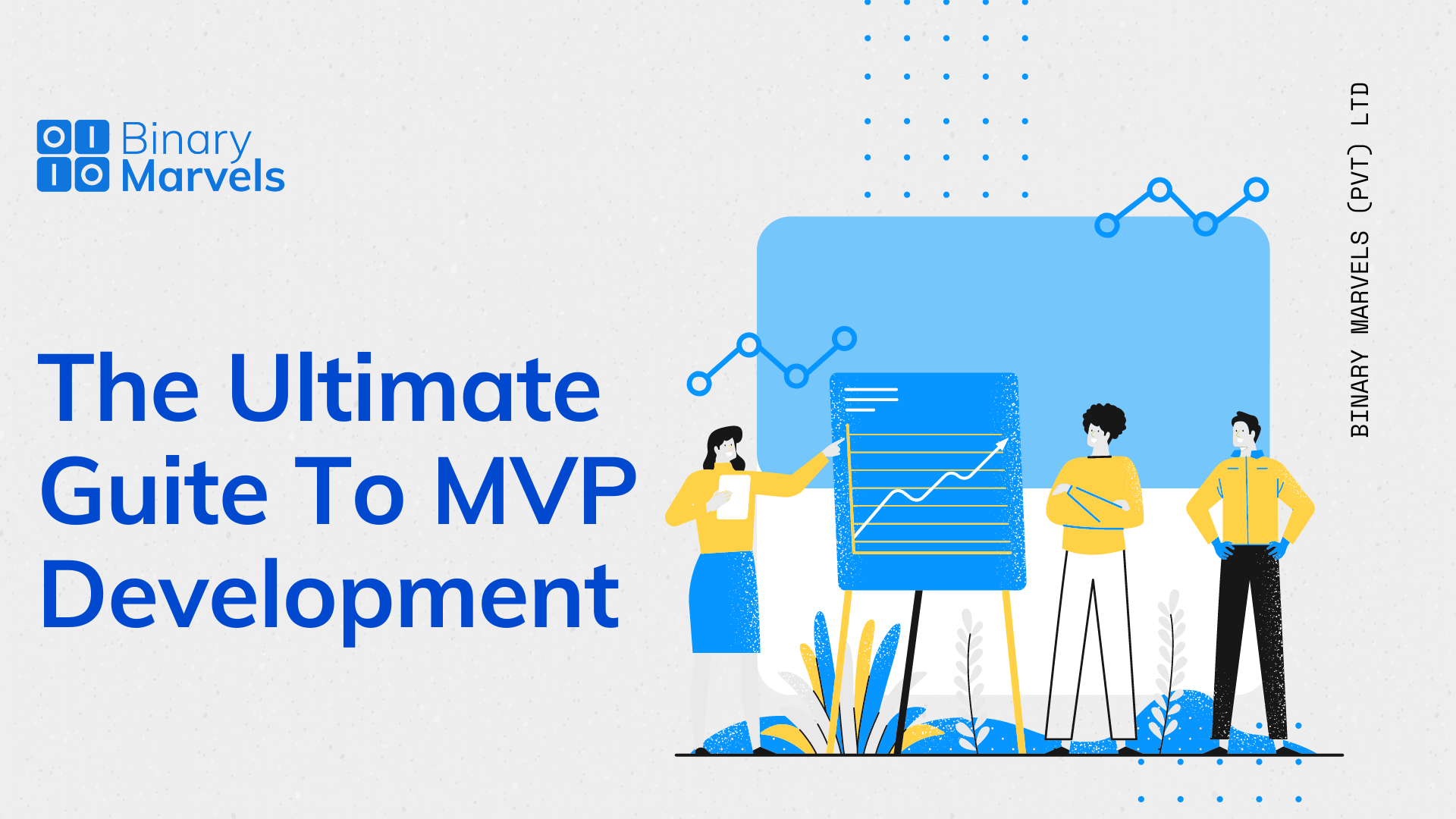
Building a minimum viable product (MVP) and subsequently growing it to a full-scale solution based on user feedback is not an overnight task. It requires a complete plan, strategies, market knowledge, and a clear understanding of the steps to build a full-scale product from MVP.
After the MVP stage, you’re undoubtedly wondering what comes next in the startup lifecycle. Fortunately, you’re not alone. To make all your investment, time, and effort behind developing an MVP worthwhile, you must know how to scale a product from the MVP stage. No doubt that not only for product development but the role of MVP in product development is highly significant. And in this article, we will walk you through the tips, steps, and guide to move from a minimum viable product to a full-scale product. But before that let’s know about the common challenges.
Challenges to Scale a Product from MVP
Building an MVP is easier to start with since it is simple to create, test, and deploy; however, as the solution grows in size, making modifications and resolving faults becomes difficult.
Run a profiler to find the bottlenecks in a solution. This profile should be executed at both the application and database layers. A profiler should be able to answer questions like: How many concurrent users can my current MVP setup support? Is a re-design required to enable a full-scale solution, or will simply scaling up on the backend with enhancements to the front stack what-is-code-profiling suffice? In the event that the existing solution suffers latency, which layer is causing it? Do the constraints that exist in the MVP stage solution exist in the code or the database?
Furthermore, there are more common challenges while scaling up a product –
Losing Focus
Keeping stakeholders and workers on the same page with product strategy becomes an increasingly more difficult task as firms develop and expand. During periods of expansion, a lot happens: the culture transforms, new offices open in new places, and new employees are hired. When new employees join the company, they may or may not have the same vision for the product. And it is the product team’s responsibility to correct this.
Development Methodologies Not Scaling that Quickly
Lean Startup approaches such as rapid experimentation are commonly used by early-stage organizations. They can quickly test, validate, create, and deliver new products and features thanks to these techniques. Growing businesses may find it difficult to maintain the effectiveness of these procedures.
As businesses grow and the development team expands, the entire development process must adapt. When one scrum team unexpectedly expands to two, three, or even four, it can take some time to modify processes to make them as efficient as possible. Not to mention the additional complication that comes with having various development teams working on different projects.
The Roadmap is Driven by Sales
I believe there’s a strong case to be made that this is an issue that all product managers face, regardless of their company’s stage. This is the most common challenge that product managers confront, according to sixteen percent of those polled, and it’s a tough one! Almost every product manager has received a request from sales that goes something like this: “I need you to build this fancy feature right now because if you do it, I’ll be able to close this mammoth of a deal.”
It’s a strong argument for some. However, when it comes to long-term product planning, saying yes isn’t always the greatest option.
Product managers at high-growth businesses frequently believe that the sales executive is the “loudest person in the room” who can change the product roadmap’s direction. This frustrates them, especially when these requests appear out of nowhere and derail well-thought-out strategic initiatives.
Post MVP Development: How to Scale Up Your Product?
The purpose of a minimum valuable product is to validate the product hypothesis, whereas the goal of a minimum marketable product is to release the product to the public and receive the first proof of success. It’s a natural progression: MVP is the first version of the product to include the functionality people anticipate, providing vital feedback to the company.
Furthermore, this method enables faster profit maximization and manufacturing profit enhancement. Delivering the proper solution to the customer’s problem is one of the most crucial minimum marketable features. Overall, a minimal commercial release allows you to focus on a small number of features rather than developing a hidden utility over time.
However, the real task begins once your MVP is ready. Because it is time to scale it up. By following the below-mentioned steps to scale a product, you can easily develop a successful scaled-up product from your MVP.
1. Use Customer Feedback and Data Collection for Your Advantage
Customer input can be obtained through quantitative analytics and research, which the team can use to develop an excellent scaling strategy. They can also use the feedback to identify which new features should be developed first, make changes to the product, and retest it. Such a strategy will ensure that your product will succeed in the long run on the market and that it will continue to develop while maintaining the necessary flexibility.
To make the most of the MVP phase, you must be prepared to collect real data from your customers as they interact with your product. As you progress from MVP to product, keep track of user behavior, interactions, and drop-off at each touchpoint to find features that may be improved, added, or removed. Remember to respond to all criticism, especially negative ones. Customers that provide unfavorable feedback are actually doing you a favor by pointing out issues that you can address as you progress from MVP to product development.
2. Consider Scalability
Many businesses have failed miserably after launching a successful MVP because they failed to consider how to scale. It’s vital to stop preparing for failure and start planning for success as you progress from MVP to product. What if 100,000 individuals were immediately interested in your product? Do you have the people, infrastructure, and inventory in place to handle that level of orders?
This generally entails addressing automation, continuous integrations, SOPs (Standard Operating Procedures), support personnel contingencies, and scalable cloud services such as payment APIs, CRM (Customer Relationship Management), and virtual contact centers in the context of digital product development. The last thing you want is for your product’s greatness to cause it to fail.
3. Adopt Pricing Strategies
At the MVP stage of software product development, pricing is another point of debate. You don’t want to test your pricing estimates on a “minimum viable product” anyhow, do you?
No, it doesn’t work that way. The purpose of MVP development isn’t to create a half-baked or hastily put-together product. A successful MVP will address the major pain points that the product is meant to address, even if it does not have all of the features of the final product.
MVP clients may pay with the idea that their purchase will be upgraded to the full version whenever your offering goes from MVP to the product in digital product development.
If you want to use your MVP to analyze your pricing estimates, keep track of visitors and conversions. When does traffic start to diminish at a certain pricing point? This type of study might help you figure out what kind of pricing structure the market will accept once the finished product is ready for the big leagues.
4. Invest in Your Marketing Strategy
Because the MVP isn’t the final product, many organizations are afraid to invest money in marketing when they release it. This is yet another blunder. Your MVP launch isn’t just a good way to see how customers react to a basic version of your product; it’s also a great way to focus on the marketing strategy that will serve you best once you move from MVP to the product.
Your MVP traffic is also great for generating leads. Using email signup lists and re-marketing pixels or cookies, you may start building a list of qualified leads to contact once your finished product is fully operational—leads who have previously expressed interest in your MVP.
5. Analyze and Test
The startup approach should emphasize adaptability and testing in order to continuously improve the quality of the product. As a result, quality control, quality assurance, and testing your MVP should all be included in the process. During the product launch, everything you track during the MVP launch—traffic, abandoned carts, conversions, social interaction, customer comments, and so on—must remain on your radar. As a result, you can continuously improve your customer journey as well as the product itself, resulting in higher customer happiness.
Continue to track the performance of your ads and undertake A/B testing to hone in on the greatest cost-per-conversion feasible, even if you got a head start on marketing during the MVP phases.
6. Adopt a Robust Product Strategy
MVP is product management and product development require a robust product strategy that can lead to a successful product scale-up. It’s critical to incorporate the market condition, product strategy and vision, and customer needs, in addition to the product experience and interfaces we work on every day.
Let’s imagine, that your shopping lists app will now serve a new sector in the food industry – and that users will be able to select a recipe and the app would automatically add the necessary products to their shopping list. Isn’t it cool? Imagine how it would affect the product consumers’ industries and trends – we may expect it to have an impact on demographic and age trends. It could, for example, be useful for elderly people who enjoy cooking. We’d have to make sure the product isn’t too advanced for senior citizens or any other segment that we hope to join our customers’ arsenal. It can even change the app’s UI color palette. We must ensure that our product will meet the needs of this industry in all aspects.
Aside from that, if your product is on the rise, it indicates you’ll be attracting more clients. More customers equal more requirements.
The Bottom Line
The post-MVP process isn’t straightforward. It’s a long way from the product’s first launch to product-market fit. As a result, ensuring that you have the financial liquidity for more and, most importantly, that you have the proper team on your side during the development of the right growth strategy is critical to a minimum marketable product release. However, once you have a plan in place and a solid software development team, scaling up the product that your consumers enjoy will be much easier.
Dealing with all the technicalities is the most difficult component of creating an MVP for a startup. This is especially important if you’re developing software. You can only handle so much information before becoming overwhelmed by the jargon and information overload. Experts will be required to assist you with the major decisions in the development of your MVP.
We’ve worked with startups at various phases of delivering their MVPs at Full Scale. Our Guided Development process allows us to identify which aspects of your startup require assistance. We can put together an MVP team of developers, project managers, quality assurance specialists, designers, and other development professionals for you. Do you want to know more? Get in touch with us!









